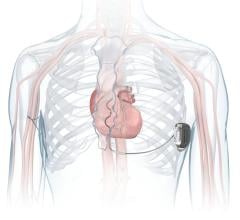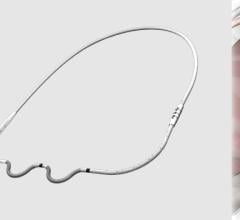April 10, 2014 — Cardiologists at Arnold Palmer Hospital for Children performed Florida’s first pediatric implant of a new device to prevent sudden cardiac arrest.
The device, called a subcutaneous defibrillator, protects patients from sudden cardiac arrest by providing an electrical impulse to muscles surrounding the heart. It is the world’s first device to provide protection from sudden cardiac arrest while not touching the heart or blood vessels.
Sudden cardiac arrest is a condition in which the heart suddenly and unexpectedly stops beating. If this happens, blood stops flowing to the brain and other vital organs. The condition usually causes death if not treated within minutes. [1]
Cardiologists at the hospital implanted the subcutaneous defibrillator into Jose Ramos, a 10-year-old Kissimmee, Fla., boy who went into sudden cardiac arrest in February 2014 and received cardiopulmonary resuscitation from his father to save his life.
“With the subcutaneous defibrillator, we now have a way to prevent sudden cardiac arrest in pediatric patients without having wires running through their veins and into the heart,” says Rodrigo Nehgme, electrophysiologist and cardiologist at Arnold Palmer Hospital. “It is a less invasive solution with fewer risks and will save the lives of young patients at risk for sudden cardiac arrest.”
The subcutaneous defibrillator is about the size of a deck of cards and is implanted just beneath the skin below the armpit. Cardiologists then run a wire, also beneath the skin, from the device to the front of the chest and up toward the neck. Whereas older technology monitored individual heartbeats, this new device actually analyzes heart rhythm and provides an electrical impulse when the heart goes into a dangerous rhythm.
Approximately 2,000 of the subcutaneous defibrillators have been implanted in the United States, with Ramos being only the fifth pediatric case.
References:
1. National Heart, Lung and Blood Institute (https://www.nhlbi.nih.gov/health/health-topics/topics/scda/)
For more information: www.arnoldpalmerhospital.com


 September 19, 2025
September 19, 2025 









